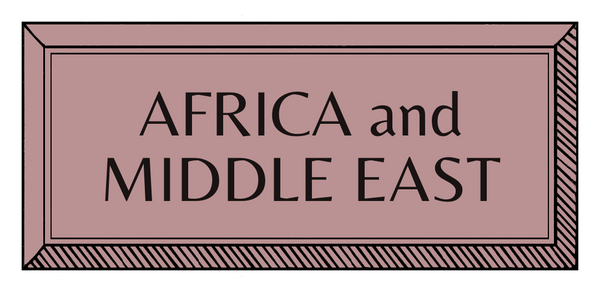CRAFT STORIES | THE AMERICAS | USA | TEXTILES
American Quilting

'Phebe Werner Coverlet', probably made by Sarah Furman Warner Williams, ca. 1803. Image courtesy of the Metropolitan Museum of Art.
Once humble household objects, quilts have evolved into cherished artifacts that tell stories of American heritage. Often crafted by women in the 18th to 19th centuries, quilts served not only as a source of warmth but as a canvas for creative expression during times of hardship. Today, museums and collectors celebrate these intricate pieces, connecting generations of craftsmanship with contemporary design.
In the United States, families with origins dating back to the Pilgrim Fathers had an item that tended not to be considered valuable but was nevertheless passed down from generation to generation - the quilt blanket. It had several merits: it kept warm, recycled textile scraps that would otherwise have been thrown away and provided a means of expression to a fraction who had little access to art and limited opportunities to create and experiment.
Quilts were in fact largely the work of women, and in many cases were a stratagem of the poorer classes to cope with hardship. Associated with folklore, it was only from the 1920s onwards that they began to attract the attention of collectors, initially fascinated more by the quality of the needlework than the visual power. It took the upheavals of the 1960s to enhance their aesthetic properties and, in time, create stimulating connections with the contemporary design world.

'George Washington Quilt', maker Unknown, ca. 1876. Image courtesy of the Metropolitan Museum of Art.
The quilt belongs inseparably to the American imagenary, on a par with the cowboy or apple pie. However, the technique has much more archaic origins, and was already known to the oldest Chinese dynasties and the Egyptians. The oldest preserved quilt comes from Sicily and illustrates scenes from Arthurian myth. The oldest quilt preserved in America, on the other hand, has a geometric design and is made of brocade silk and velvet; it is believed to have been made in the early eighteenth century by the wife and daughter of the governor of Massachusetts and curiously enough, the filling contains pieces of paper, including fragments of the 1701 Harvard University catalogue.

'Honeycomb Quilt', Elizabeth Van Horne Clarkson, ca. 1830. Image courtesy of the Metropolitan Museum of Art.
For historians, the golden age of quilting is between 1775 and 1850, although fine examples can be found in every era. Eli Whitney's invention of cotton gin at the end of the eighteenth century gave a radical boost to textile production, while the mid-nineteenth century was the period of the spread of chemical dyes: two events that greatly influenced the popularization of quilting.
The Victorian period introduced the use of precious fabrics (taffetas, satins, brocades, often made from ball gowns or draperies) and in the last two decades of the 19th century we can rightly speak of a quilt-mania sweeping the country (to the point of having speculation phenomena on fabric scraps that until recently had been considered unserviceable, or the inclusion in cigarette packets of decorated silk triangles designed to entice women to smoke). Begun as a community activity based on family transmission and the drive of necessity, the technique now ranges from hobbyist to conscious use by artists and designers.

'Baltimore Presentation Quilt', likely designed by Mary Hergenroder Simon, ca. 1849. Image courtesy of the Metropolitan Museum of Art.
There are two techniques for making a quilt, but they can often be used at the same time on the same work: piecing (made in exactly the way the word implies: by placing the already shaped pieces of the pattern next to each other) and appliqué (where the fabric fragments are attached on top of a larger cloth). To judge the refinement of a composition, it should be considered that the sharper the angles of the shapes that make up the pattern, the more difficult it is for the weavers to execute.
Over the centuries, the technique developed its own varied iconographic heritage, of which, however, the preserved remains are only partially representative. Most families in fact possessed winter quilts, summer quilts, and finally 'the best quilts', which had ornamental purposes: it is these, given their lack of use, that have been preserved in the best condition and have populated collectors' collections.

'Woman's Rights Quilt', Emma Civey Stahl ca. 1875. Image courtesy of the Metropolitan Museum of Art.
In American tradition, it was believed that a girl had to have finished twelve quilts before becoming engaged - and various superstitions concerned the making of the thirteenth. Being a popular phenomenon, many beliefs and precepts were indeed associated with the quilt: 'if an unmarried girl sews the last quilt piece, she will remain an old maid', or 'if a quilt seam breaks, something unlucky will happen'. Today, Amish communities in particular and ordinary individuals scattered across the nation perpetuate the tradition in the simplest and most straightforward way: by making quilts in their spare time, often in women's groups, for personal use or for direct sale. The work of Gee's Bend, an isolated African-American community with a difficult past of slavery and famous for quilts dense with hidden spiritual meanings and for stitchers-artists such as Loretta Pettway, has recently been given due prominence. In New York, both the Metropolitan Art Museum and the Folk Art Museum have remarkable pieces, but scattered around the country are several museums devoted exclusively to this technique: The New England Quilt Museum, The Texas Quilt Museum and The Iowa Quilt Museum to name a few.

'Crazy Quilt', maker Unknown, ca. 1880-85. Image courtesy of the Metropolitan Museum of Art. Crazy quilts, popular during the late nineteenth century, were typically crafted from irregularly shaped pieces of velvet and silk.
Words by Sara Pierdonà
Images from the Metropolitan Museum of Art


































